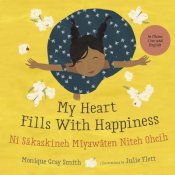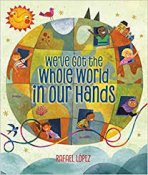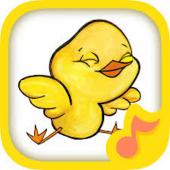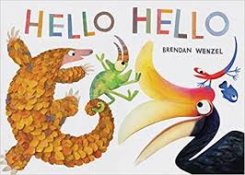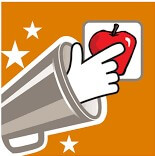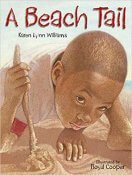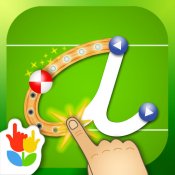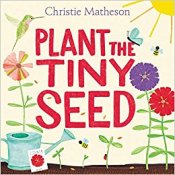Preschoolers’ (kids ages 3-5) brains are primed for learning through the five early learning activities: talking, singing, reading, writing and playing. Per research in The Roots of STEM Success, children in this age group tend to “ask an average of 76 information seeking questions per hour.” As their child’s first and most important teachers, parents maximize this learning when co-viewing—meaning sharing and interacting with media, and utilizing the early learning activities in interactions around apps, tech toys and any new media. This is why early childhood development experts recommend caregivers “talk, sing, read, write and play” with children every day.
While very young children learn best from real world interactions, the American Academy of Pediatrics (AAP) recently updated its guidelines for using technology as a learning method for children. However, AAP strongly recommends that parents choose high-quality programming that creates interaction. Even the World Health Organization (WHO) has recently issued new research on screen time. Screen time is not recommended for children under 2 in most circumstances. For children under five WHO suggested they spend one hour or less engaged in screen time. AAP provides a handy resource guide and a resource to customize your family’s media use plan. Librarians can serve as media mentors for families by suggesting apps and media use tools. Here are a few of our favorite apps for little learners, along with some tips and activities to support early literacy.
Talking to children is important because they need to receive and create language to learn it.
- Book: My Heart Fills with Happinessby Monique Gray Smith
- App:Touch and Learn-Emotions by Innovative Mobile Apps. ($1.99, iOS)
- Interaction: The Touch and Feel-Emotions app introduces and reinforces vocabulary related to emotions. The app displays text which is read aloud and paired with four different pictures of an emotion. The app is also highly customizable in the “settings” option. Social and emotional skills are some of the most important areas for school readiness. By talking about emotions and asking others about their personal experiences, children learn to identify feelings. While it is important for children to be able to identify emotions related to anger and sadness, it is also important for children to be able to identify positive emotions like happiness. Reading books like My Heart Fills with Happiness helps to expand a child’s vocabulary and helps them to identify with positive emotions.
Singing is a great way for children to learn about language because the sounds that make up words become more evident.
- Book: We’ve Got the Whole World in Our Hands adapted by Rafael Lopez
- App: Los Pollitos by Encantos Media Studios, PBC. $0.00 (iOS and Android)
- Interaction: Singing with our children is a way to help them hear the smaller sounds in words, especially if there is a different note for each syllable. Learning to hear the parts of words helps develop phonological awareness which later helps with reading. We’ve Got the Whole World in Our Hands takes a classic song and adapts the words to spread a message about the power of community. Los Pollitos is a free app based on a classic Spanish children’s song. While using this app with your child you can sing along with the original Spanish version (or choose from eight different languages), experiment with musical notes on a simple stringed instrument, and engage with other open-ended play experiences.
Reading and sharing books provides a learning opportunity to explore ways to deal with emotions and feelings.
- Book: Hello, Hello by Brendan Wenzel
- Apps: Sounding Board by AbleNet ($0.00, iOS)
Animal 360 by YED28 ($0.00, iOS)
- Interaction: Encourage your child to talk while you are sharing books and apps–children need to receive and create language to learn it. Hello, Hello is a book filled with lesser known animals, many of which are endangered, like a Pangolin. Use this book to discuss patterns, animal camouflage, animal habitats, and even simple colors. Reading books with repeated phrases like Hello, Hello encourage children to participate in the reading experience. Point to the word “Hello” as you say it to make the connection between the verbal and print version of a word. For non-verbal children, you can use an app like Sounding Board to record your own voice saying “Hello” and encourage the child to touch the screen when you say the phrase in the book. To extend the reading experience, use the Animal 360 app to play recordings of animal sounds and match them to animals in Hello, Hello.
Writing involves any kind of mark making including scribbles, which are a child’s first steps to learning how to write.
- Book: Beach Tail by Karen Lynn Williams
- App: Letter Schoolby Letter School Enabling Learning ($0.00, iOS, Android)
- Interaction: Being able to coordinate small muscles in hands and fingers enables children to hold things, cut with scissors, tie their shoes, and fasten buttons. Development of fine motor skills also helps prepare children to write. Beach Tail tells the story of a boy drawing in the sand on a beach. You can use this story as inspiration for your child to draw with their finger in a tray of sand or on the ground with a stick. Even though children may not write letters or words that we recognize, they are communicating and building the fine motor skills which they will use to write. Practice with chunky crayons, paint brushes and chalk to connect writing with the words in books. When a child is ready to form letters, the Letter School app where children can practice writing through activities in the app.
Playing gives children an opportunity to experience the world while developing fine and gross motor skills, cognitive concepts, language and social skills.
- Book: Plant the Tiny Seedby Christie Matheson
- App: Bugs and Buttons by Little Bit Studio, LLC ($2.99, iOS, Android)
- Interaction: Children learn through play! Research continues to show that play builds the foundation for growth in areas like literacy and STEM. Playing with other children at a young age, experiencing the fun of taking turns and sharing, and discovering that it is fun to pass the ball and then get it back, are great ways to learn important social emotional skills. Taking turns while reading an interactive book like Plant the Tiny Seed develops a child’s impulse control. Plant the Tiny Seed also encouraged participation as the actions of the reader appear to make the plants grow. Bugs and Buttons is an engaging app which offers many different activities featuring photorealistic bugs, which some children find fascinating. Many of the activities utilize different capabilities of a tablet, which teaches your child how to operate technology, an essential aspect of digital literacy.
Check out our preschool app list of staff favorites for more suggestions.

